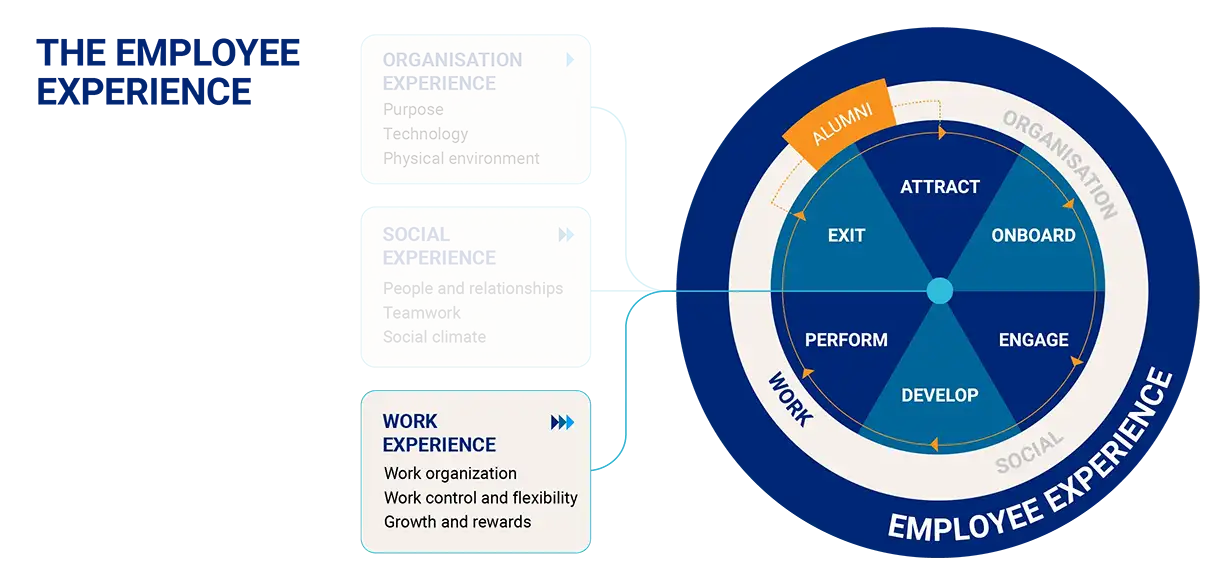Article 3 - Employee experience: Getting the ‘work’ experience right

- The organisation of work, and whether employees are given clear responsibilities and resources to be successful.
- Providing the control and flexibility to complete their tasks in a way that creates a synergy between work and personal life.
- Offering the right rewards for the work done and opportunities for growth to help employees upskill and develop.

The organisation of work and bringing success
Work control and flexibility
| "Work/life integration (WLI), rather than work/life balance, can help tailor an work situations to an employees work style and personal situation to help create a productive, but balanced work environment." |
Growth and rewards
| "76 per cent of employees more likely to stay within a company that offers continuous learning." |
Implementing a better work experience
1. Organisation of work tasks: Your action steps
2. Work control: Your action steps
3. Growth and rewards: Your action steps
In a rapidly changing world of work, employees are more focused than ever on continual growth, and being engaged by the work that they do. Organisations that can implement changes in the short, mid, and long-term not only provide the resources needed to enhance the employee experience, but also strongly position themselves for the future.
[2] https://www.shrm.org/resourcesandtools/hr-topics/employee-relations/pages/from-worklife-balance-to-worklife-integration.aspx
[3] https://www.go1.com/blog/how-employees-like-to-learn
[4] https://hbr.org/2023/09/reskilling-in-the-age-of-ai
[5] https://www.talentlms.com/employee-learning-and-development-stats
Search for candidates
Management issues
Manage the performance of contingent workers
The core skills you need in your talent strategy
Tips for creating a strategic vision
Why you need a succession plan
Diversity, equity, and inclusion activities
Diversity, equity and inclusion
Top tips for creating a strategic vision
Build Agile NZ working environments
Mitigating co-employment risks
Leading people through volatile times
Upskilling for an AI Future report
How to reenergise a tired team
Why is organisational purpose important and how can you define it?
Top tips for managing your multi-generational workforce
Managing your contingent workforce
Your introduction to employee experience
Equality, diversity & inclusion
How to onboard & induct new staff
Are we letting down middle-managers?
Do we need a right to disconnect at work?
How to conduct a performance review
Talent management for on-demand staff
The secret to talent management planning
Whose responsibility is upskilling?
How to offer career progression
How to decide who gets a pay rise
Pros and cons of salary transparency

